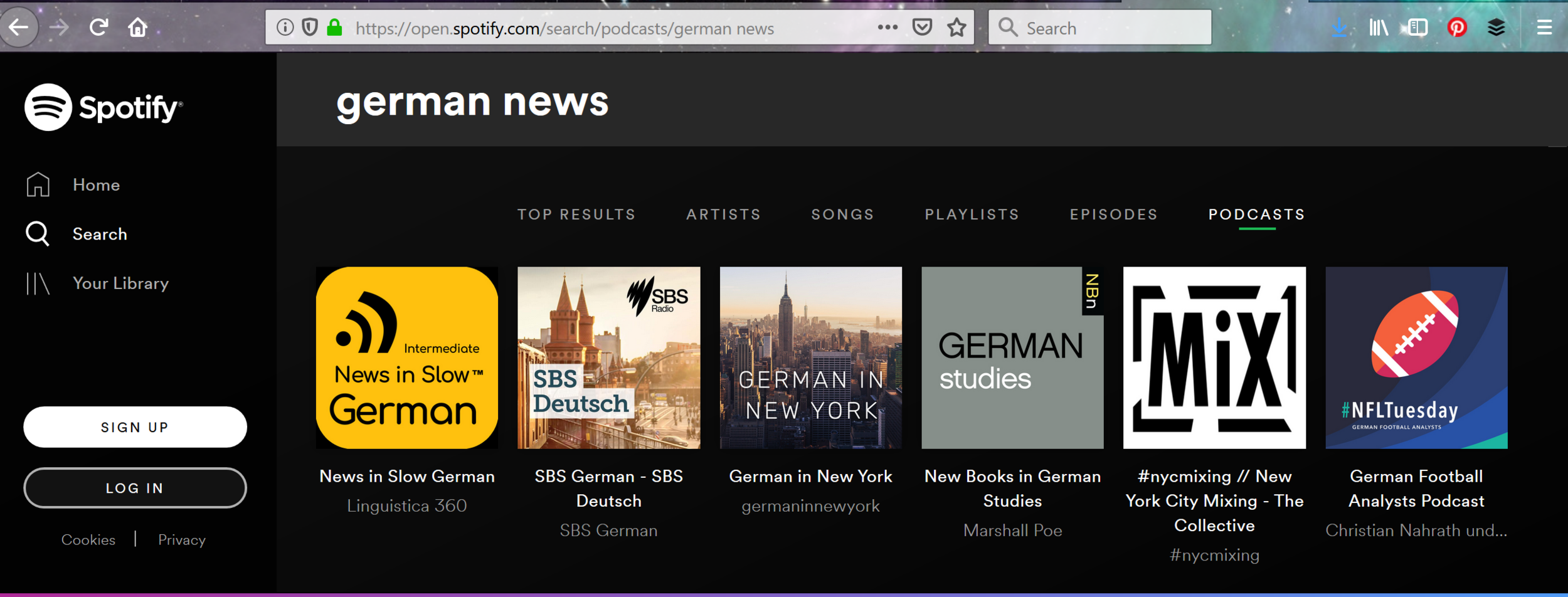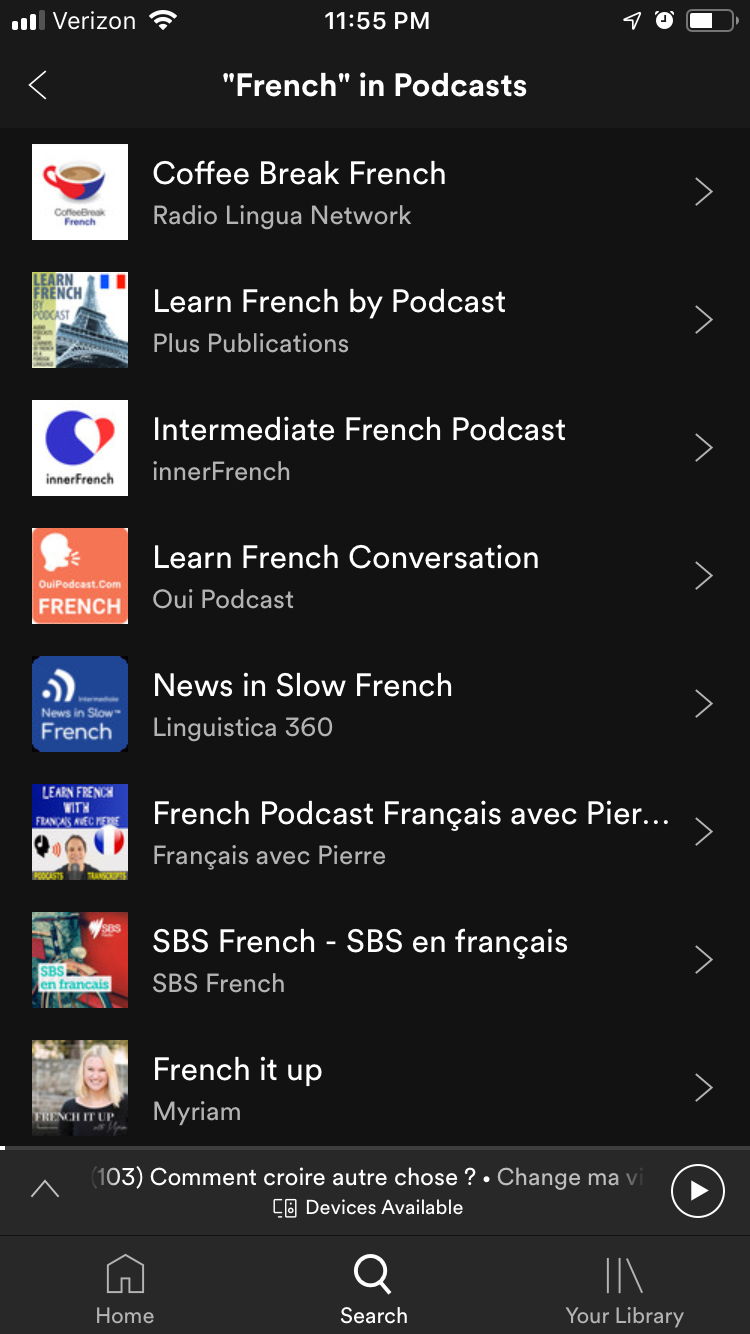How would you like to learn a language with the help of a famous musician?
Sounds awesome, right? Truthfully, the idea isn’t so far-fetched.
Learning a new language isn’t all about studying grammar and memorizing vocabulary. In fact, many of us have listened to music in another language and even learned a few things from our favourite songs.
For example, who knew the name of Seoul’s cool kid district before "Gangnam Style" became a sensation?
As you can see, it’s always a good idea to explore music in your target language.
Using music to learn a language can help you feel more connected and invested in a language as well as add a bit of creativity to your usual routine.
The tough news is that can be hard to find music you enjoy listening to in your target language(s). How do you find the top artists in German or French? What if you don’t care for the top hits and want to search for songs in a particular genre?
That’s where music apps like Spotify turn into amazing resources for language learners.
If you’ve ever had trouble finding more songs and artists to listen to or if you’ve wondered whether it was worth it to try a popular music app like Spotify, here are some tips that can help you make the most of learning with all that Spotify has to offer.
Spotify Basics
What is Spotify?
Spotify is a streaming service that lets you listen to music and podcasts on your mobile device or computer. Using the app, you’ll discover music from artists all over the world, which makes it a fantastic resource for language learners.
It’s available for you to use on multiple devices, including your laptop, your phone, your tablet, or your gaming system.
There’s a free version as well as a paid premium version. Both allow you to search for music and podcasts, get recommendations for new music based on your preferences, and create your own playlists.
How to Learn with Music
Spotify is simple enough to use, but how should language learners start using it to actually learn something?
Can you really learn with music?
Yes! Think of music as just another resource. For example, you could..
Look up the lyrics, translate them, and try to sing along
Song lyrics can be simple or complex - some talk about love, others just ask you to put your hands up. Either way, it’s a joy to discover what’s actually being said in the song that you’ve had playing in the background. And once you read along and start speaking or singing the lyrics to yourself, you’ll feel a boost in confidence...like a fluency rock star.
You can even find out about the stories behind your favourite lyrics using apps like Genius. Check out this podcast to learn how it works.
Genius user comments in Spanish
Check out the websites of your favourite artists or follow them on social media
Most artists will post on social media using the language that they sing in, and there’s a wealth of studio pics, in-jokes and fan responses to discover too. Who knows, the next time they announce a gig you might even find the courage to go and see them live? Going to gigs in my target language is one of my top activities!
Discuss your favourite songs or lyrics you don’t understand with a tutor or language exchange partner
Translating lyrics can be tougher than it looks at first, but that’s what you can work on with your tutor. Plus, if you’re working with a local native speaker living in the target country (such as most italki tutors), they’re likely to tell you about even more groups and artists in the target language.
Songs are natural input, a great way to become familiar with the way native speakers use a language to express themselves. Listening to lyrics is also helpful for training your ear and your pronunciation. I also find that I have a much easier time remembering new vocabulary that I’ve learned from songs because I’ve formed a personal, specific connection with the words and I’ve paired them with music.
Ways to Learn Languages with Spotify
Let it Play
Do you already know at least one song you like in your target language? How about an artist?
Head to the ‘Search’ bar and type in the song or artist you already know. Use that as your starting point and simply let it play. You’ll be able to shuffle through all of the songs under that artist or Spotify will start to play songs similar to what you’ve chosen.
It’s a great way to build up a playlist of songs in your target language, especially if you’re not sure what to listen to. Plus, this option works for both free and premium versions of Spotify.
Find a Playlist
If you’ve already started searching and listening, you’ll soon find that Spotify has some recommendations. You can try shuffling through the recommended artists and albums or try one of the Daily Mix playlists.
You also have the option of listening to other peoples playlists. If a user (or fellow language learner) has made a playlist public, you can choose to listen to the collection of music they’ve put together. In other words, you don’t have to go through the trouble of finding songs to create your own playlist if you don’t want to.
Want a Quick Start Into Spotify Playlists?
I have put together an awesome checklist of Spotify playlists with the help of Lindsay from Lindsay Does Languages, and it’s yours for free today - simply join the Fluent Language newsletter using
Spotify also generate their own playlists, though it’s more difficult to find language specific playlists this way.
Learn with Podcasts
Search Your Language
Music is wonderful, but sometimes you’re up for a bit more learning. Spotify can still help by providing access to hundreds of podcasts.
The easiest way to search is simply by typing your target language into the ‘Search’ bar. You can look up French or français, Spanish or español, Italian or italiano, etc. Either way, you’ll end up with a long list of language related podcasts.
If you already have a favorite podcast in mind, you can search by the podcast name, such as Coffee Break to find all of the Coffee Break language podcasts.
Listen to News Radio
While searching for language learning podcasts, you might come across SBS Radio in your target language. In fact, this is just one of many great options for listening to short news stories. in other languages.
If you search for SBS Radio, you’ll see options in dozens of languages. You can also find popular podcasts like News in Slow German or similar slow news podcasts.
And of course, don’t forget that you can find the Fluent Show (your favourite podcast, right?) on Spotify too. Simply type "Fluent Show" in the search and hit play.
Find Native Language Podcasts
You can easily find podcasts geared towards native speakers as well. If you don’t have a specific topic in mind, type your target language into the Search bar and continue scrolling through until you find a title written out in the target language. In fact, I found one of my favourite French podcasts about personal development with this method, using "français" in the search bar.
If you do have a topic idea in mind, you can also type a related word in the target language into the search bar. Then, be sure to select ‘Podcasts’ or scroll down and select ‘See all podcasts’ (if you’re using the mobile app). This will bring up all the podcasts that have your search term in the name as well as related podcasts in the same language.
Make it a Habit
Adding music to your language learning can make things easier, but your efforts will only pay off if you take the time to learn and use the vocabulary your favourite song can teach you. Most of all, you need to do it consistently.
Listening and learning from music can be both fun and useful when you make it a regular habit.
If you’re an independent language learner, forming successful habits and doing more with the songs you love in your target language isn’t always easy. For those who struggle to create an ideal language learning routine, check out the Language Habit Toolkit. It’s meant to help you create habits that work for you, which includes adding the music you love to your language learning.
Learn more about the Language Habit Toolkit here.
Thanks to Cassie Wright for your help writing this article.




